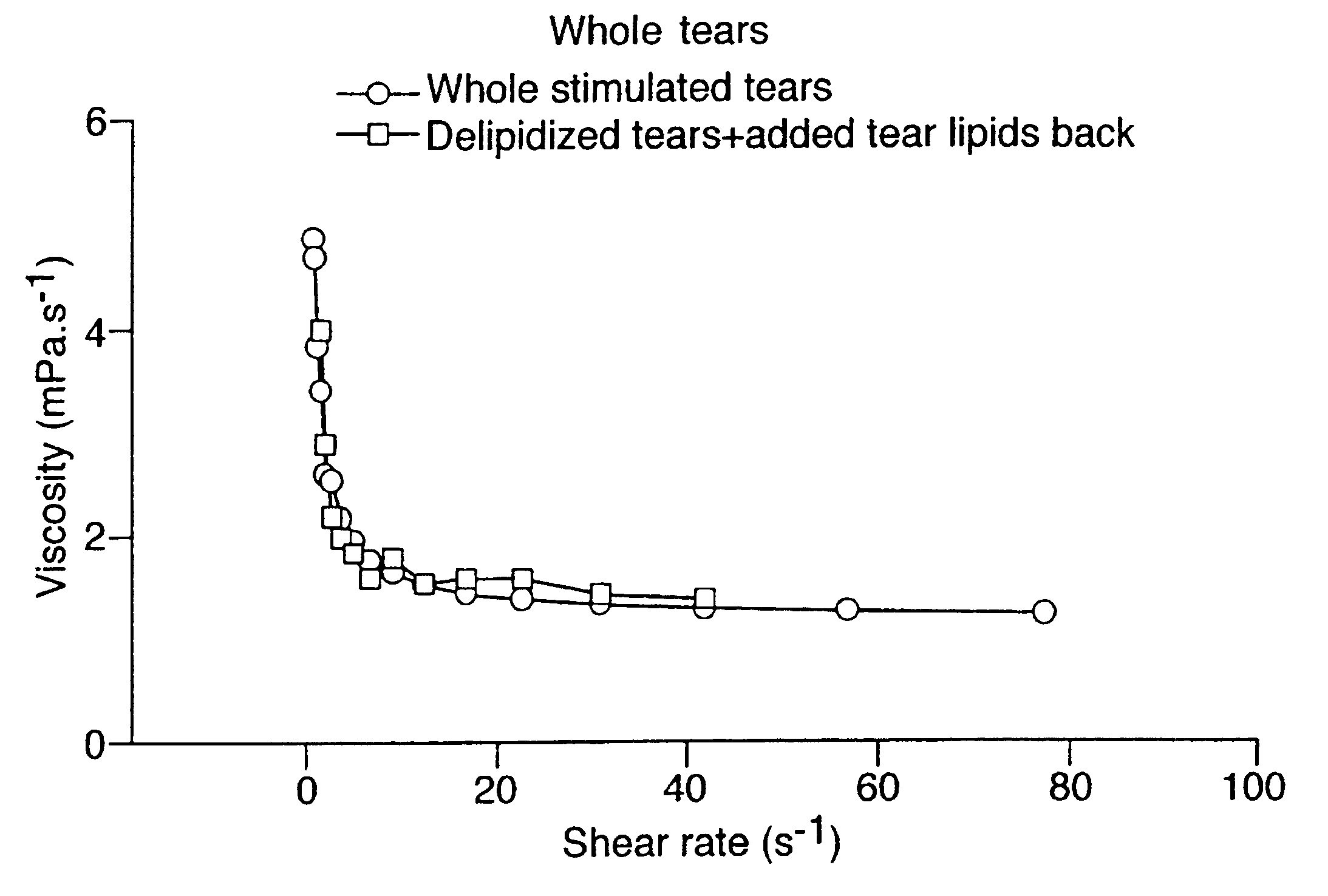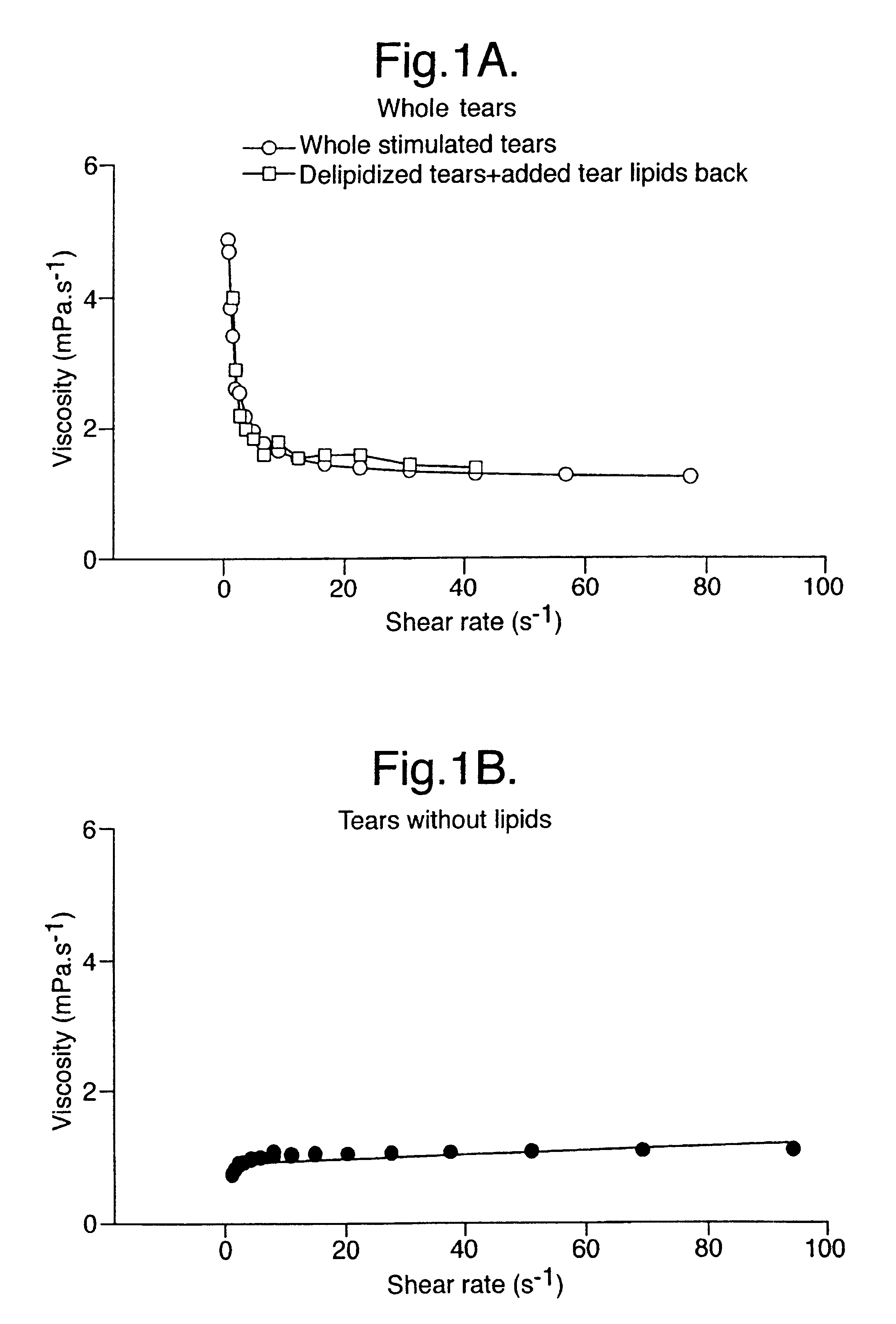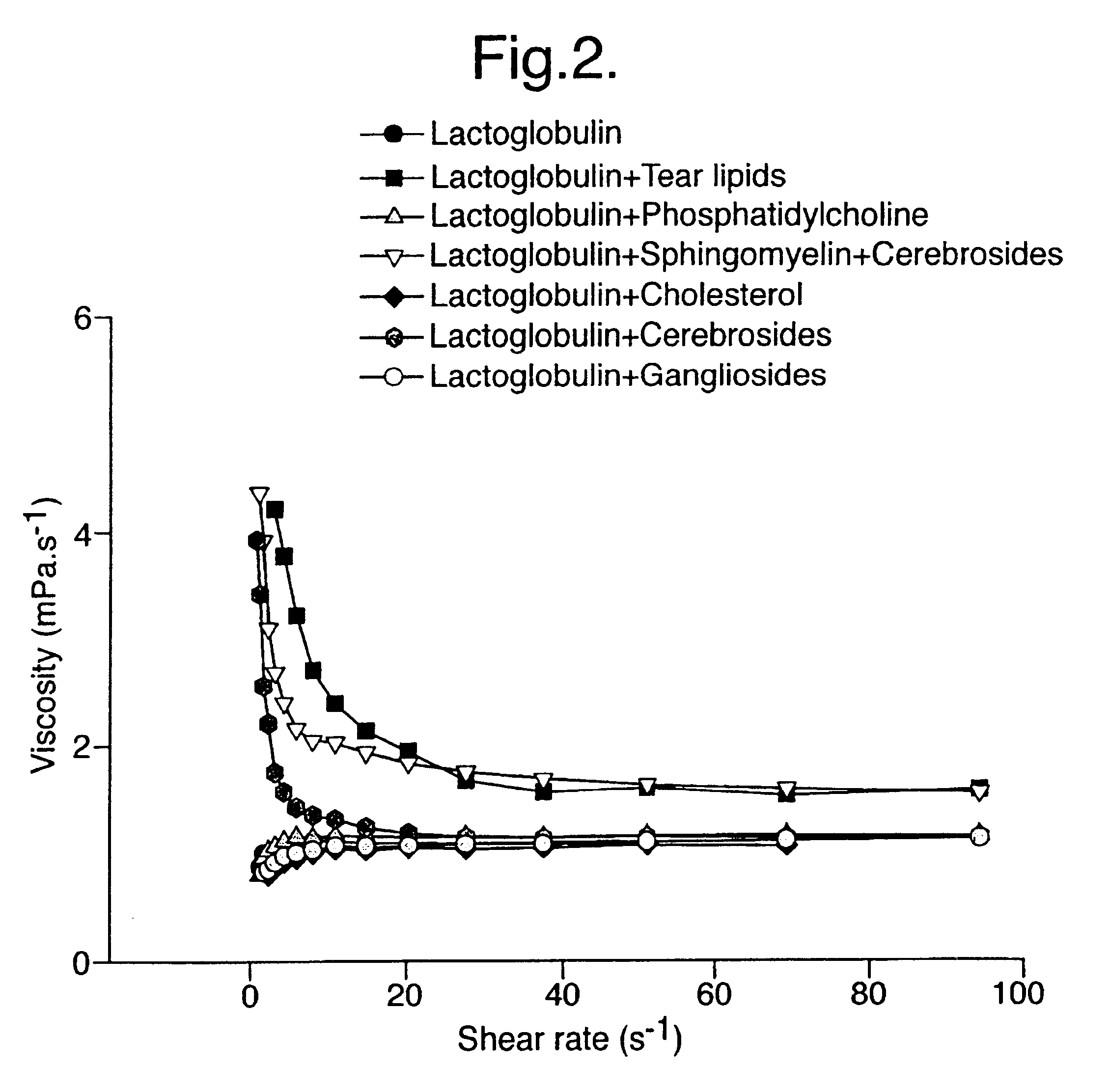Artificial tear formulation
a technology of artificial tear and formulation, applied in the field of formulation, can solve the problems of blurred vision, eye discomfort, damage to the exposed surface of the eye, etc., and achieve the effect of reproducing the viscosity and surface tension properties
- Summary
- Abstract
- Description
- Claims
- Application Information
AI Technical Summary
Problems solved by technology
Method used
Image
Examples
example 2
Effects of adding back representatives of various classes of lipid on the physical properties
The inventors have added back a series of different lipids to lipid-free tears (an equal amount each time); all improved the surface tension. These results cannot be directly compared with the effect of natural tear lipids since its concentration in tears is unknown, therefore an exactly equivalent amount of lipid has not been added. The greatest effect was seen with polar lipids, including phospholipids and sphingolipids. This was seen with both surface tension (Table 2) and viscosity.
It should be noted that, although Meibomian lipids contain phospholipids, they are either of the wrong type or present at too low a level to restore full function. In two cases (dioleoyl-PC and galactosphingosine) the recovery appears even to exceed the original surface activity, but this may depend on the amount added, or, being significantly water-soluble, they may show the properties of the lipid itself rat...
example 3
State of lipids in tears
To determine whether the lipid exists free in solution (as a monomer / micelle equilibrium) or bound to proteins only, the inventors centrifuged tears in a micro-centrifuge tube filter. This uses a membrane with a nominal size-exclusion limit of 5 kDa, although in practice molecules up to about 15 kDa may pass; all the principal tear proteins should hence be retained, but the aqueous medium and any contained micellar lipids should pass through the filter. After 2 hours at 13000 rpm virtually all fluid had passed through. The residue was reconstituted in saline to the original volume, and surface tension was measured on the filtrate, the reconstituted tears, and reconstituted tears after extracted of lipid (Table 3).
This clearly suggests that the active substances are largely unable to pass through the filter, and that the lipid is still extractable from the reconstituted residue, and presumably bound to protein.
example 4
Attempts to identify the lipids extracted from the tears
The inventors have made a preliminary characterisation of the lipid extracted from tears by thin-layer chromatography (TLC) and gas-liquid chromatography (GLC), and by high-performance liquid chromatography (HPLC) on normal and reversed-phase columns. By simply injecting a sample of the extract into the GLC the inventors obtained a pattern of peaks which is substantially different from that obtained with Meibomian lipids from the same subject. However, many lipids, including polar lipids (whose effectiveness was indicated in Example 2 are involatile or partially or completely break down at the GLC running temperatures, so any peaks seen may be either breakdown products or from other inactive components. It is interesting that little correspondence is seen with the Meibomian trace, though.
Several TLC systems were used, optimised for separation of different parts of a lipid mixture. A general separation shows separation of Meibom...
PUM
| Property | Measurement | Unit |
|---|---|---|
| pH | aaaaa | aaaaa |
| concentration | aaaaa | aaaaa |
| concentration | aaaaa | aaaaa |
Abstract
Description
Claims
Application Information
 Login to View More
Login to View More - R&D
- Intellectual Property
- Life Sciences
- Materials
- Tech Scout
- Unparalleled Data Quality
- Higher Quality Content
- 60% Fewer Hallucinations
Browse by: Latest US Patents, China's latest patents, Technical Efficacy Thesaurus, Application Domain, Technology Topic, Popular Technical Reports.
© 2025 PatSnap. All rights reserved.Legal|Privacy policy|Modern Slavery Act Transparency Statement|Sitemap|About US| Contact US: help@patsnap.com



